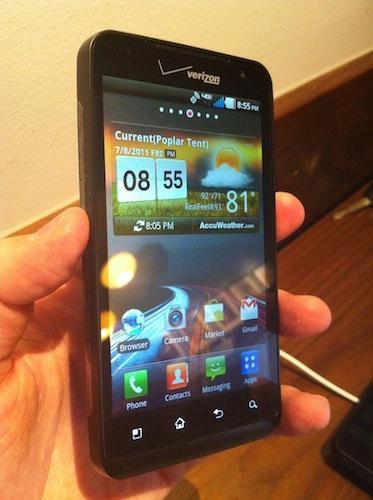
Verizon's 4G LTE is on a roll. Launched in December 2010, LTE has spread to 74 markets, with the promise of 145 markets by the end of 2011. The LG Revolution is the newest addition to Verizon's 4G smartphone roster, and it packs some high-end features such as a 1 GHz Snapdragon CPU, 4.3-inch display, HDMI port, and a front-facing camera for video calling. That said, it's launching at the same price point as the HTC ThunderBolt, which offers added features like an 8-megapixel camera, kickstand, and of course, HTC's strong reputation of upgrading their devices as new Android software builds launch. Choice is always good, but does the Revolution live up to its name?
Looks are always subjective, but there's no denying it - the LG Revolution is the chunkiest of Verizon's crop of 4G LTE smartphones. Coming in at 5.03 inches tall by 2.63 inches wide by 0.52 inch thick and tipping the scales at 6.08 ounces, it's the largest and heaviest of the three. The phone ships in a black box similar to the HTC ThunderBolt and offers an AC adapter, USB cable, 8 GB microSD card, and the usual instruction manuals. The left side houses the microUSB charging port, while the right side offers the volume rocker and an HDMI port. Both the charging port and the HDMI port are protected by a flap. On the top, you'll find the 3.5mm headphone jack and power button.
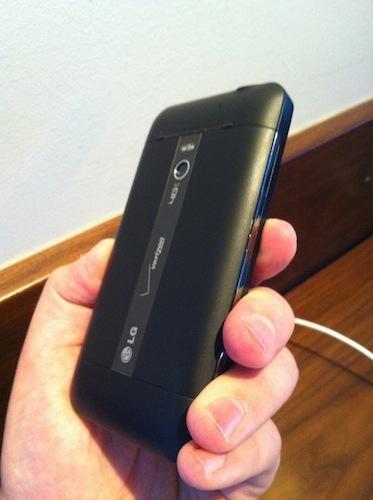
Revolution offers a plain-Jane 4.3-inch display. No qHD or Super AMOLED Plus to be found here, and it shows when compared to devices like the Samsung DROID Charge and Motorola DROID X2. Also, I find the display to be unresponsive in comparison to other smartphones on the market. I'll often have to tap an application two or three times before my gesture is registered.
Sporting a 1 GHz Snapdragon processor, the LG Revolution is zippy in most day-to-day tasks. While there's the occasional lag when running a graphics-intensive task like a video, you won't see any lag while browsing the web, downloading apps, or taking pictures.
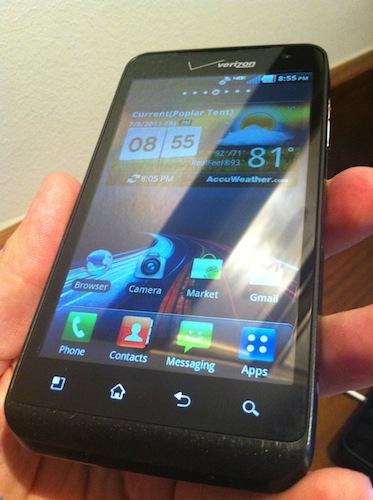
The Revolution ships with Android 2.2 and LG's custom smartphone user interface. While manufacturers like HTC and Samsung have had years to perfect their mobile user interfaces (Sense and TouchWiz, respectively), this is LG's first go-around in the smartphone overlay arena, and it shows. LG's interface isn't as developed as its competitors, and widgets and apps aren't as polished as the other interfaces. That said, software interface preferences are subjective, so be sure to check out the Revolution's in comparison to other UIs like Sense, TouchWiz, and MOTOBLUR.
The device ships with quite a few pre-installed applications like VZ Navigator, Netflix, Rhapsody, Rock Band, Slacker, Lets Golf 2, Bitbop, TuneWiki, V CAST Apps, V CAST Media Manager, 4G Mobile Hotspot, Backup Assistant, Guided Tours, and My Verizon Mobile. Sadly, most of them can't be uninstalled, though they can be moved to a different folder within LG's menu structure and hidden.
The Revolution has a 5-megapixel camera with a flash and 720p HD video recording, and though it's behind most of its competitors, it takes a decent still picture. Editing options include image size, scene mode, ISO, white balance, color effect, shot mode, image quality, and more. The 720p HD video was a mixed bag. The video quality was fairly good with vivid colors, but the audio quality was terrible. It's certainly not going to replace your point and shoot camcorder, though it'll be usable for the occasional video.
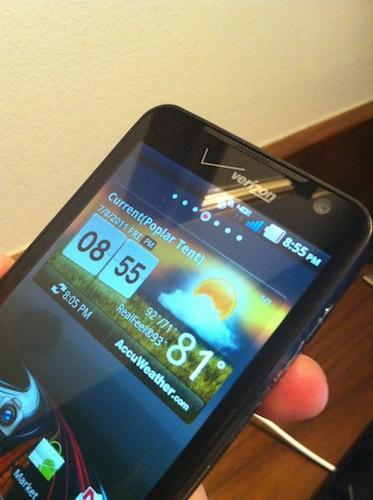
I tested the LG Revolution in the Charlotte metro area and while traveling through Western North Carolina one weekend, and overall, call quality was impressive. The earpiece is sufficiently loud, and my callers had no problem hearing me. When testing it in a few fringe areas, I was able to retain the call each time, though call quality dropped substantially in the various dead zones and I was unable to hear the caller over the "chop."
As I said earlier, Revolution is Verizon's third 4G LTE device, and the speed tests don't disappoint. As I expected, the phone achieved download speeds between 8.66 and 14.39 Mbps, with upload speeds between 3.34 Mbps and 7.53 Mbps. While Verizon's LTE is not reliable as a standalone data service just yet (it constantly cuts in and out after a few minutes of use), it works perfectly in the mobile data department. Web pages loaded incredibly fast and apps download with incredible ease. It's amazing to use LTE for a few days and return to 3G; it's like a night and day difference.
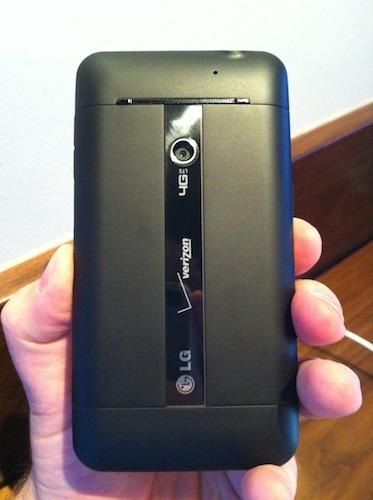
The Revolution packs a 1,500 mAh battery. Remember my complaints about select Samsung devices taking too long to charge? The LG Revolution is far worse. As an example, I plugged it in at around 1:00 PM on a Saturday, and by 4:30 PM, it had only charged 32 percent. Needless to say, there's a contingent of users out there that live off of 15 and 20 minute charges between meetings; for those people, the Revolution won't pass the test.
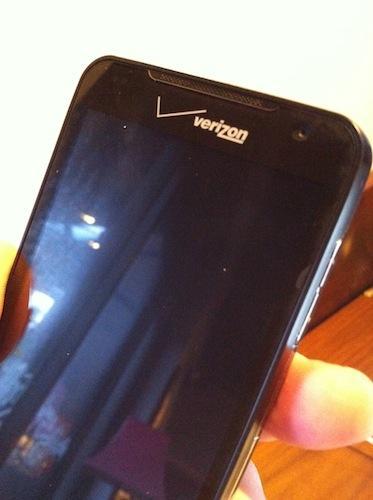
It's always good to have choice, and the LG Revolution compliments Verizon's 4G LTE lineup by offering a device with a different design, an HDMI port, and Netflix support out of the box. The problem with the Revolution is that it's not revolutionary. There's nothing to distinguish this device from the other two 4G devices, and in most cases, one of the other two devices has a performance or feature advantage. Take the ThunderBolt, which also retails for $249.99. It offers an 8-megapixel camera, has a more developed user interface, and will be receiving Gingerbread in the near future.
What's Good: Call quality; HDMI port and Netflix out of the box means you can watch movies while traveling.
What's Bad: Revolution is bulky and takes too long to charge. The user interface needs work as well.
The Verdict: Revolution is a nice addition to Verizon's lineup, but the HTC ThunderBolt (which, as of the time of this writing) is priced the same and offers a better feature set.